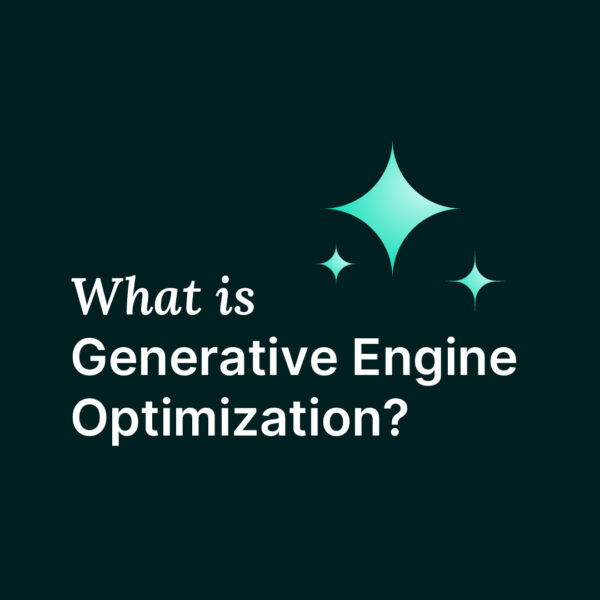As generative AI transforms how we interact with information, a new evolution is already underway: Agentic Search. It’s the next step beyond traditional generative engine responses and a critical topic for marketing professionals and C-suite executives to understand.
Agentic search is a new paradigm that uses AI agents to perform deep, iterative searches. Instead of a single query-and-response, these systems break down a complex question into smaller subqueries, search for the most relevant content in parallel, and then synthesize the results to provide a comprehensive, context-aware answer. It’s a proactive, goal-driven process that can adapt and make decisions similar to a human researcher.
The data on this emerging trend is compelling:
- A study by First Page Sage found that AI agents can save an average of 66.8% of time compared to manual search tasks.
- Kieran Flanagan, co-host of the podcast Marketing Against The Grain, predicts that by 2027, as much as 95% of all B2B buyer journeys will start on a large language model (LLM).
- This technology is fundamentally changing search behavior, as agentic AI will act as an intermediary, curating options for users and potentially leading to fewer direct website visits.
For your business, this shift fundamentally changes the search experience. Agentic AI will act as an intermediary, presenting curated options to its human users, which means people may visit fewer websites overall. This makes the quality and trustworthiness of your content more critical than ever. To remain discoverable and compete effectively, brands will need to become the authoritative sources that AI agents rely on for information.
This brings us to the core of this new world: Generative Engine Optimization (GEO).
From SEO to GEO: Why Your Content Strategy Needs a Generative Engine Update
The landscape of search is changing. For years, marketing professionals and C-suite leaders have optimized their content strategies around SEO. But as generative AI engines like ChatGPT and Google’s Gemini become more integrated into our daily lives, a new approach is emerging: Generative Engine Optimization, or GEO. This isn’t just a new buzzword; it’s a fundamental shift in how we create and deliver content.
GEO is all about creating content that AI models can understand, prioritize, and use in the responses they generate. Unlike traditional search engines that might favor keyword density, generative engines are looking for the best, most relevant answer. For marketing leaders, this means moving beyond simple keyword tactics and focusing on a more strategic, human-centric approach. Here’s what you need to know.
Speak the Language of AI
The first core strategy of GEO is to speak the language of AI. Generative engines rely on natural language processing (NLP) to interpret user queries and generate responses. This means your content needs to be conversational, clear, and packed with context to be effective. It’s about mirroring how a person would ask a question, and then providing a direct, comprehensive answer.
- Use long-tail, question-based keywords. For example, instead of “best running shoes,” try “What are the best running shoes for beginners?”.
- Write in a natural tone that mirrors how people ask questions.
- Answer related questions within your content to anticipate and satisfy user intent.
Think Beyond Text
The real magic of generative engines is their ability to mix and match content types like text, images, and videos to create complete responses. They’re setting a new standard for how information is delivered, and if your content doesn’t have that same variety, it might not make the cut. This means expanding your content creation beyond written articles to include a more diverse range of media.
- Incorporate visual content, such as custom graphics, photography, and infographics.
- Experiment with video content. Short-form videos are perfect for answering complex questions or explaining processes.
- Add podcasts or sound clips to expand your reach and appeal to users who prefer to learn by listening.
Prioritize Relevance Over Volume
Unlike traditional search engines that favor keyword density, generative engines prioritize content relevance. They’re not just looking for the “most optimized” page—they’re looking for the best answer. The focus has shifted from creating a high volume of content to making a smaller volume of in-depth, authoritative content that truly addresses user queries.
- Create in-depth, authoritative content that directly addresses user queries.
- Structure content clearly with subheadings, bullet points, and summaries to make it easy for AI to understand and index.
- Regularly update your content to ensure it stays fresh, accurate, and relevant.
Get Technical
Just because GEs use AI doesn’t mean you can forget about the technical side of optimization. In fact, understanding and implementing technical SEO plays a considerable role in GEO success. These technical elements ensure that generative engines can efficiently crawl, understand, and process your content, which is a foundational requirement for your content to be used in their responses.
- Use structured data/schema markup to help GEs understand context.
- Optimize site speed to ensure fast user and AI processing load times.
- Implement accessibility features like alt text for images and clear navigation for a better user experience.
The shift to GEO is more than a trend; it’s a strategic evolution in content creation. It demands a more holistic, human-centered, and technically sound approach. At Walk West, true partnership is key to navigating this new landscape. We don’t just implement a new strategy—we work alongside you to create content that speaks to both your audience and the AI models that serve them.
Ready to lead the charge with a content strategy built for the future? Let’s connect and discuss how we can help you win with GEO.

